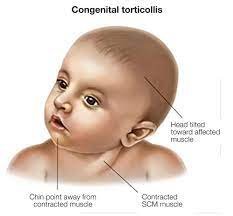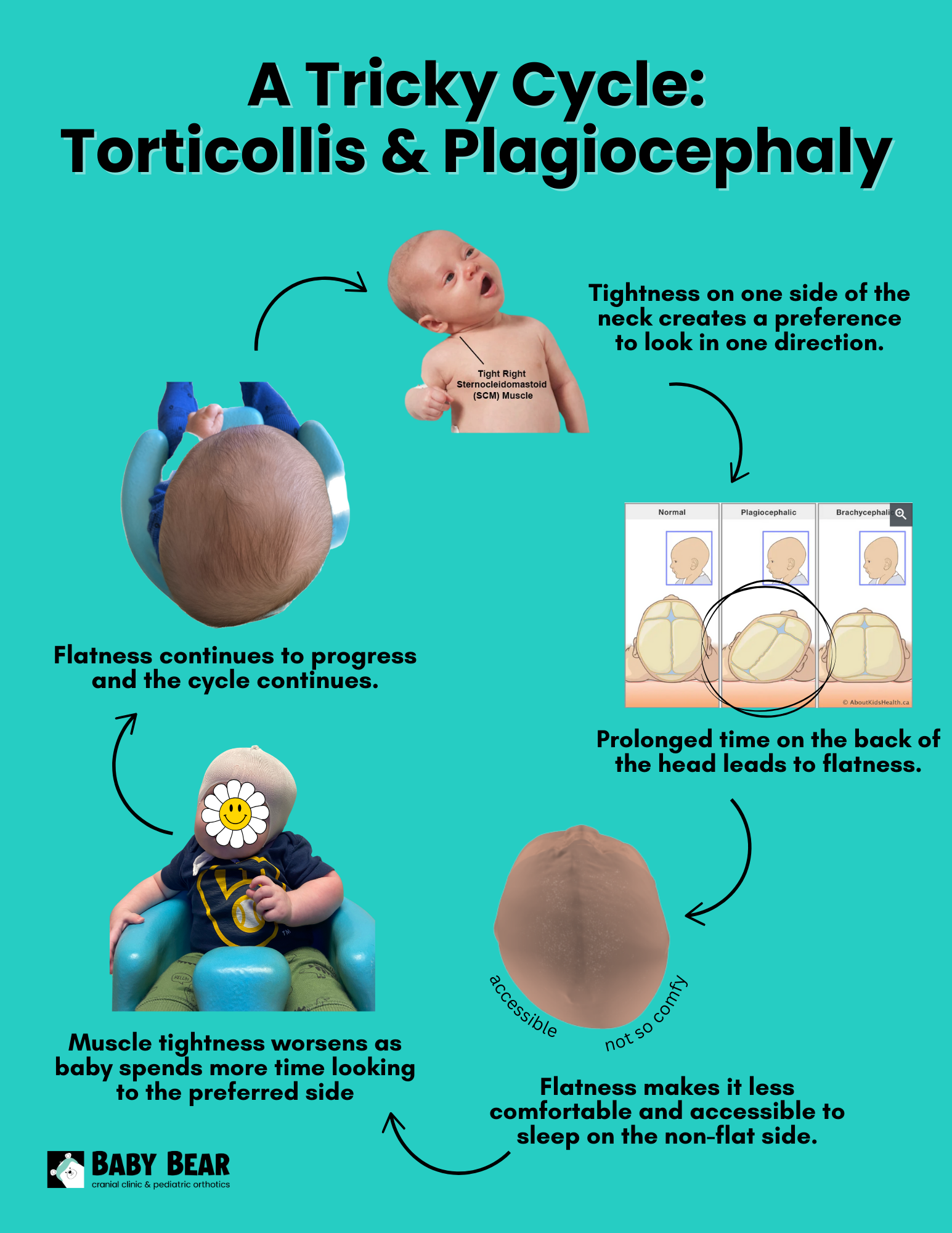A Tricky Cycle: How Torticollis Influences Flat Head Syndrome
A baby’s early months are full of growth and development, but certain conditions can impact how they move and develop physically. One such condition is torticollis, a common issue that affects the muscles in a baby’s neck and can have a direct influence on head shape. Understanding this connection can help parents take proactive steps to support their baby’s healthy development.
What Is Torticollis?
Torticollis, also known as “twisted neck” or “wry neck,” occurs when a baby’s neck muscles tighten on one side, causing the head to tilt to one direction while turning to the opposite side. This condition can be present at birth (congenital torticollis) or develop within the first few months of life (acquired torticollis). Congenital torticollis is often caused by positioning in the womb or muscle tightness, while acquired torticollis may result from environmental factors or underlying medical conditions.
In the majority of cases, the baby’s flat spot will be on the opposite side of the neck tightness.
Ie., Flatness on right side of the head, tightness on the left side of the neck
The Connection Between Torticollis and Head Shape
A baby’s skull is soft and malleable in the early months of life, which allows for rapid brain growth but also makes it susceptible to external pressures. Since babies spend a lot of time lying on their backs or in car seats, uneven pressure on the skull can lead to a condition called positional plagiocephaly, or “flat head syndrome.”
Torticollis contributes to head shape changes in the following ways:
Preferred Head Positioning: Babies with torticollis often turn their head to the same side repeatedly, placing more pressure on one area of the skull.
Flattening of the Skull: The prolonged pressure on one side of the head can lead to asymmetry, causing flattening on one side (plagiocephaly) or a wider back of the head (brachycephaly).
Limited Neck Movement: Because the tight neck muscles restrict movement, the baby may struggle to reposition their head naturally, reinforcing the cycle of flattening.
Facial Asymmetry: In severe cases, persistent head tilting and skull asymmetry can also impact the alignment of the ears, eyes, and jaw over time.
Related: Head Shape 101: Different Kinds of Head Shapes and Cranial Deformity Lingo
The Cycle of Torticollis and Head Shape Deformities
Torticollis and head shape deformities often create a reinforcing cycle:
The baby favors one side due to neck tightness.
Prolonged time on that side increases flattening.
The flattening makes it more difficult for the baby to comfortably rest on the opposite side.
The torticollis worsens as muscle tightness remains unaddressed.
Related: Baby Gear and Flat Spots: How Containers Influence Head Shape
When to Seek Help and How to Support Your Baby
Early intervention is key to preventing long-term complications. If you notice that your baby frequently tilts their head in one direction, has difficulty turning their head both ways, or has noticeable flattening of the skull, it’s important to consult with a pediatrician, physical therapist, or orthotics specialist.
Ways to support your baby’s development include:
Tummy Time: Encouraging supervised tummy time helps strengthen neck muscles and reduces time spent on the back of the head.
(Read this for tips for on how to keep your baby happy on their belly.)Positioning Adjustments: Alternating head positions during sleep and play can help distribute pressure more evenly.
Physical Therapy: Gentle stretches and exercises prescribed by a therapist can improve neck muscle flexibility and strength.
Orthotic Helmets: In some cases, a custom cranial orthotic helmet may be recommended to help reshape the baby’s head.
Final Thoughts
Torticollis and head shape deformities are common concerns for infants, but with early intervention and proper care, most babies achieve normal head shape and neck mobility. Understanding the connection between torticollis and head shape can empower parents to take action and ensure their baby’s healthy growth and development.
If you have concerns about your baby’s head shape or neck movement, schedule a consultation with Baby Bear Clinic to explore personalized solutions for your child’s needs.



